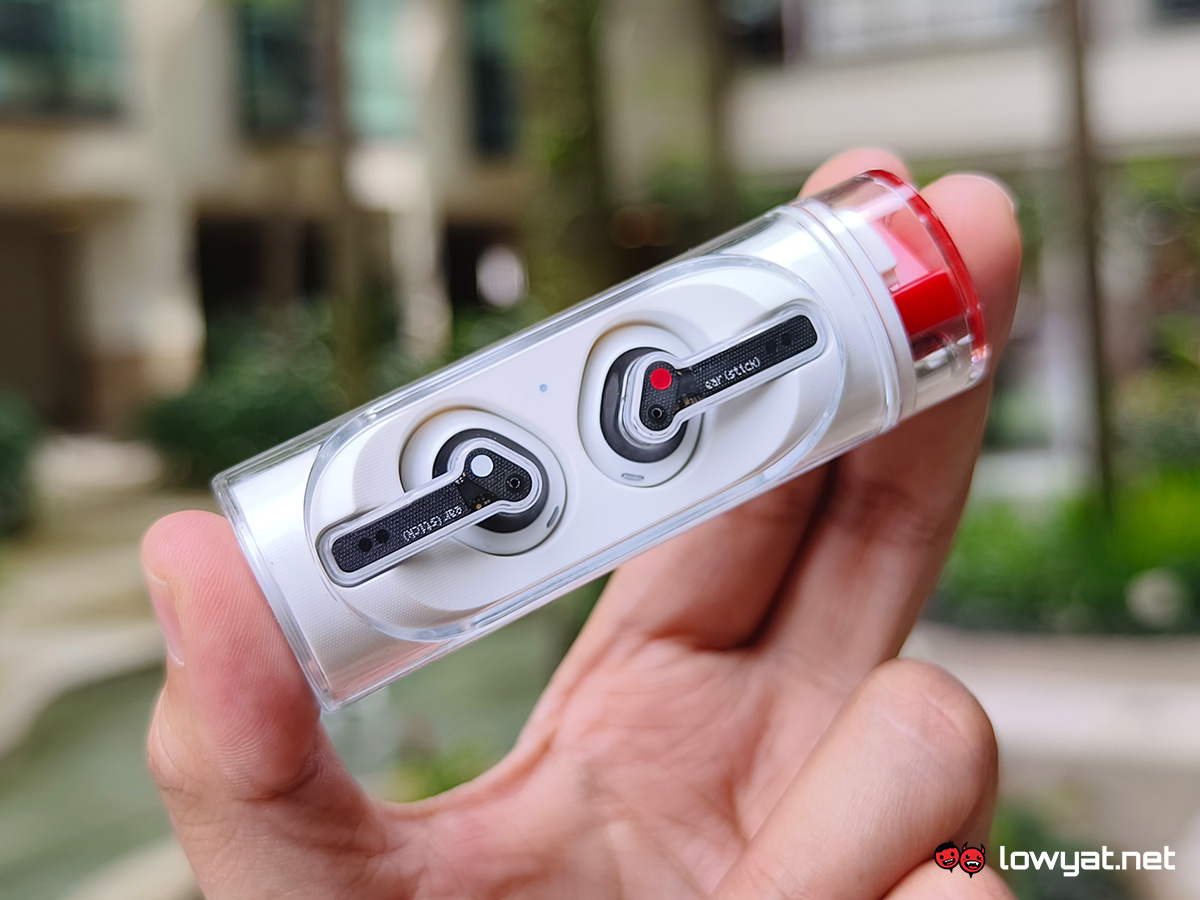The Ear (Stick) is Nothing’s second TWS earbuds after last year’s excellent Ear (1). Like its sibling, the newer model arrives with an almost identical aesthetic that reflects the company’s easily recognizable design language which emphasises on transparency and minimalism.
But as previously clarified by Nothing CEO Carl Pei, the new buds are not an update to the company’s inaugural audio device, and is actually a completely different product altogether. That being said, it does come with features and hardware that are unique to it.
So, the question remains: Is the new Nothing Ear (Stick) a better option over its sibling? Let’s find out.
What Is It?
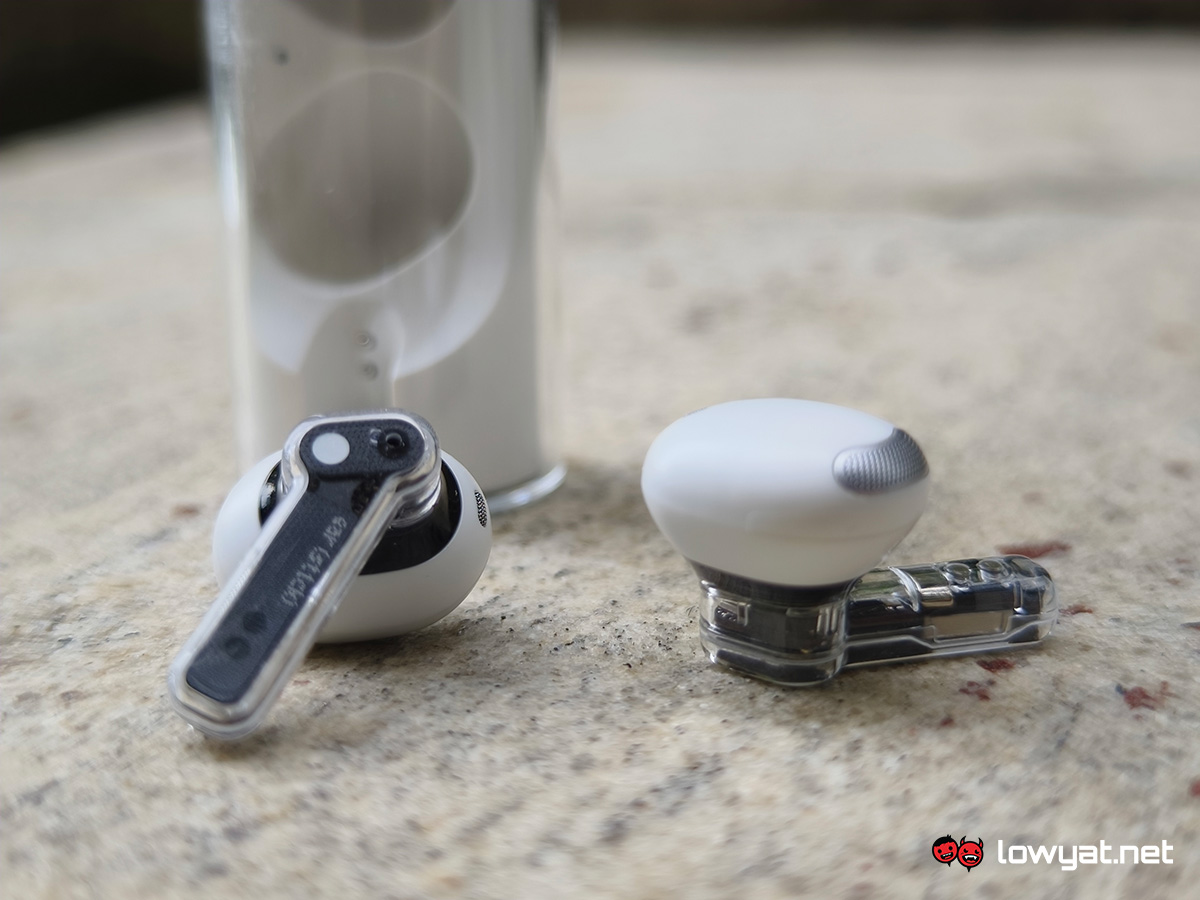
Coming in at RM 130 less, the newer buds are marketed as an entry-level option that lacks certain features offered on the higher-end Nothing Ear (1). However, despite this, it does actually come with some upgrades in certain departments – chief amongst which being the larger 12 mm audio drivers.
Without a doubt, the Ear (Stick) is pretty much Nothing’s answer to the non-Pro AirPods. Like Apple’s product, it also sports a tip-less design, pinch-based controls, and the lack of active noise cancelling (ANC). However, the device does come with something that’s currently exclusive to it: A lipstick-inspired charging case.
Is It Any Good?
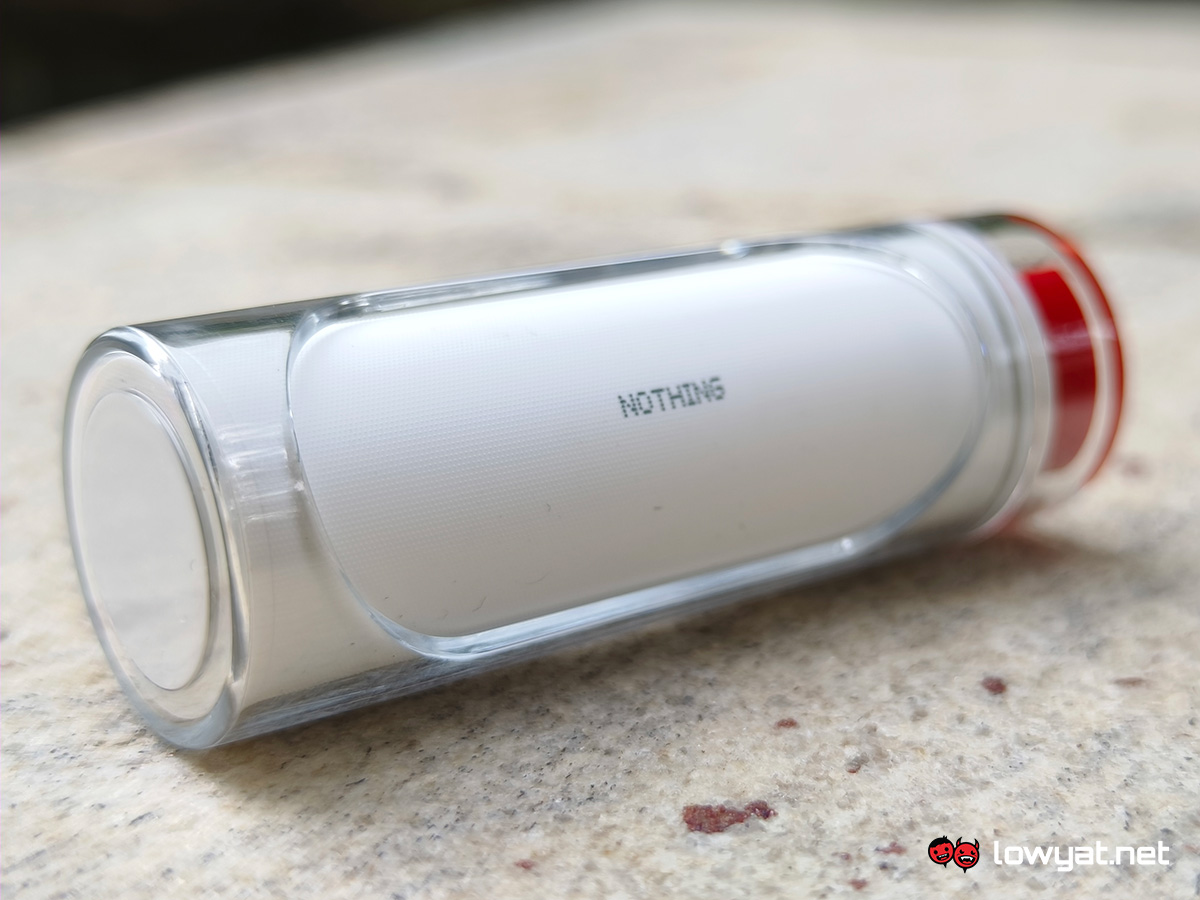
As mentioned earlier, Nothing’s latest audio product looks almost identical to the Ear (1), which may disappoint those who are hoping for something different from the company this time around. Personally, I don’t mind it at all, as it still does a good job standing out from the usual bunch that clearly copied Apple’s homework.
What’s really different is the Ear (Stick)’s charging case. Transparent aesthetics aside, it is still the only pair of earbuds that offers an accompanying lipstick-inspired rotating case, which is so simple yet effective in terms of functionality. This is very convenient when it comes to storing and freeing the earbuds, while its compact size is just perfect for storing in pockets or bags.
Meanwhile, the battery expectancy for the Nothing Ear (Stick) is exactly as advertised. More specifically, the buds offer up to seven hours of music playback on a single charge, as well as a combined total of up to 29 hours when used together with its case.
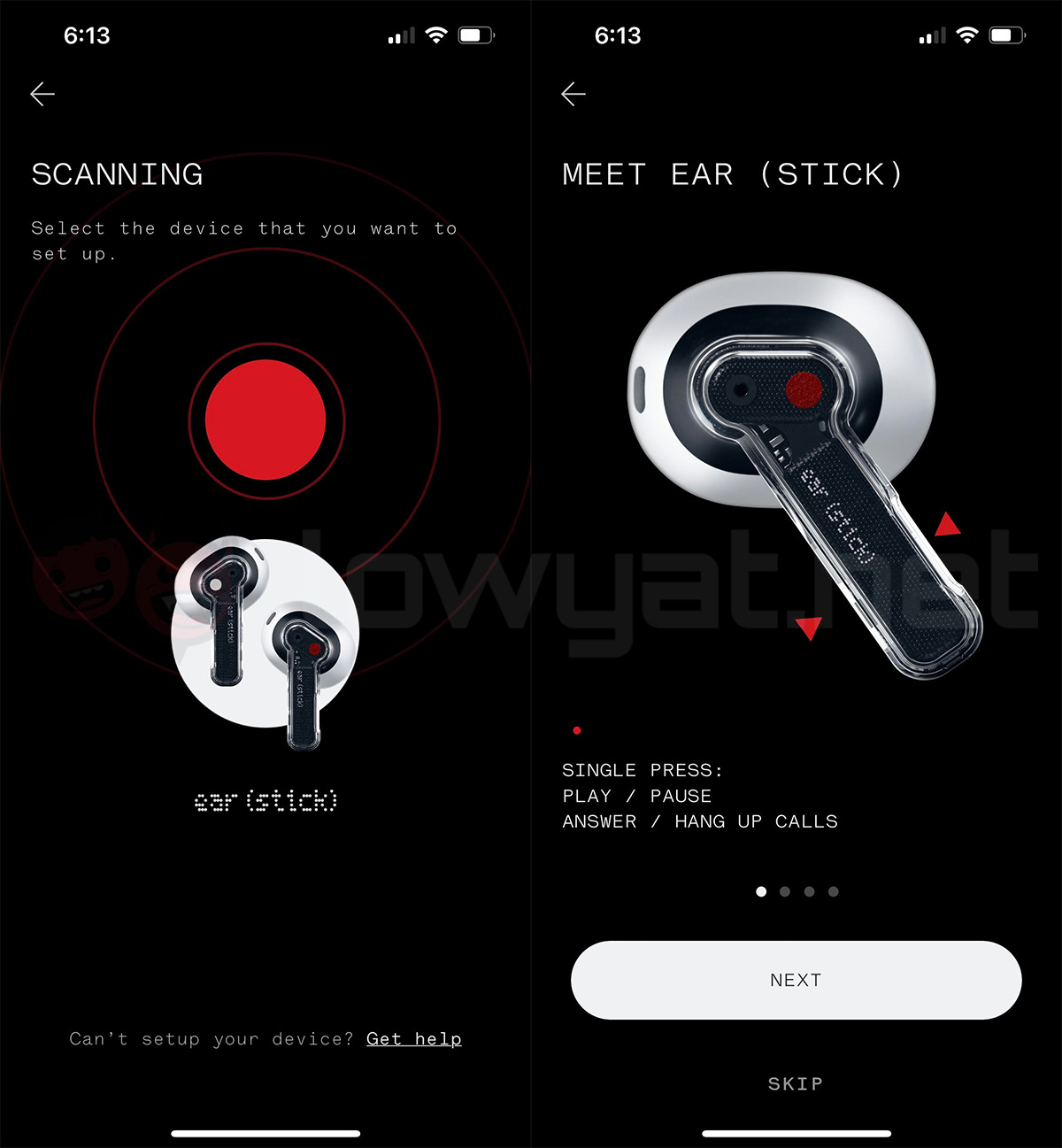
I find myself only plugging in the case to a power source a week or so since the last time I charged it. While charging each earbud doesn’t necessarily take long for a full top-up or even a couple hours of use, you will have to wait a while if you expect its case to pack enough juice for the long run.
As for controls, instead of featuring the same touch panels like its predecessor, the Ear (Stick) went with pinch-based interactivity instead. It’s definitely something to get used to if you’re not accustomed to the regular AirPods-like approach, though it is still easy to use.
The commands themselves are pretty straightforward: pinch once on either side to pause or play tracks, pinching twice skips to the next track, and holding down the stem will gradually increase or decrease volume depending on which side you interact with. And much like the Ear (1), you can customise each command to fit your own personal preferences via the Nothing X companion app for mobile devices.
The Sound Quality. Talk To Me.
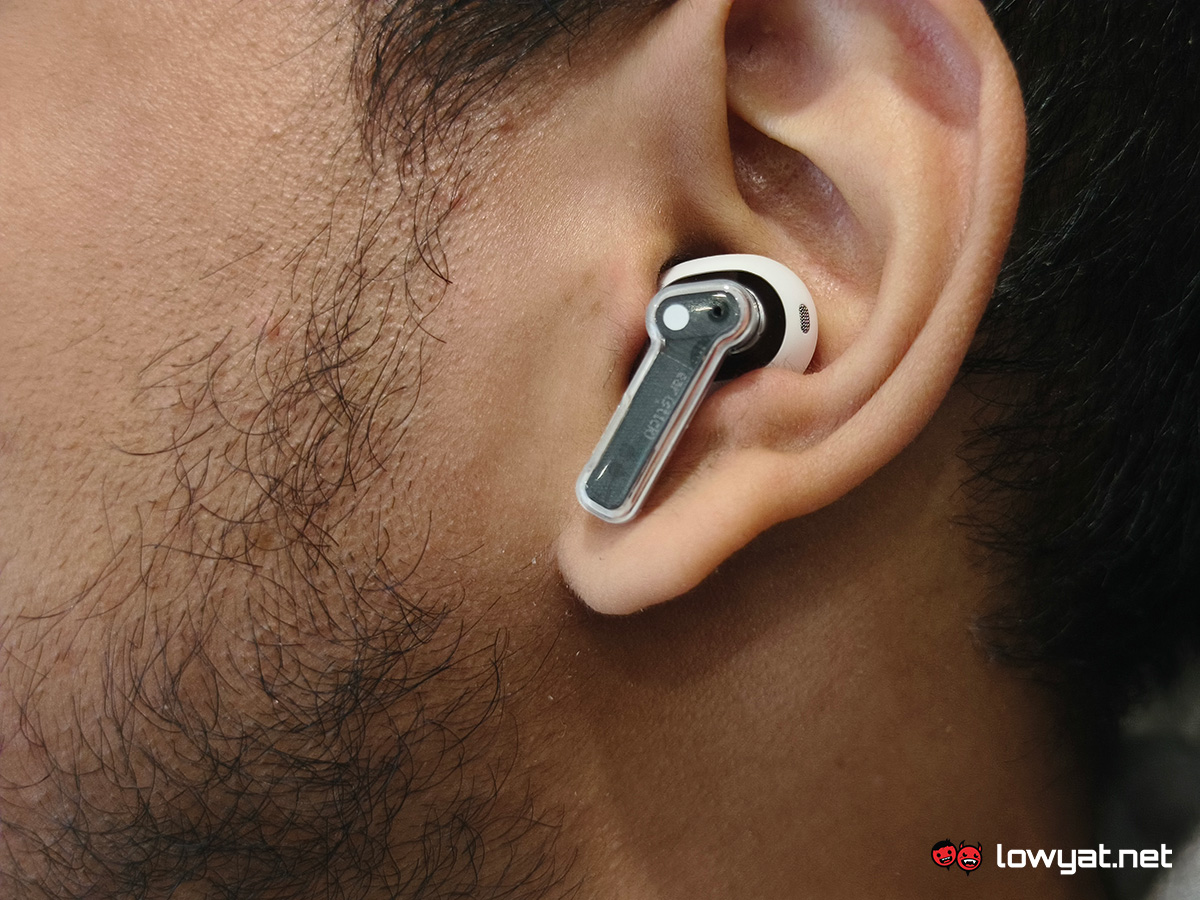
As mentioned earlier, the Ear (Stick) is equipped with larger audio drivers than Nothing’s initial earbuds release. For the most part, this is indeed a much appreciated improvement which, again, proves that it is still possible to experience above average audio without needing to break the bank or opt for devices only coming from known audio brands.
Sound quality is crisp and clear, with considerably decent sound staging and depth. There is presence for bass in most tracks that I’ve tested the earbuds with, though don’t expect a satisfying feedback. For the most part, the Ear (Stick) performs very well when playing rock, pop and even classical music that involve multiple layers of instruments as well as vocals.
The volume range is also much louder on the buds, even on lower settings. This is a significant improvement over its predecessor, and it makes sense as higher volumes are necessary to compensate for the lack of ANC. Which now brings us to the next part of my review…
The Bad Stuff. Tell Me.
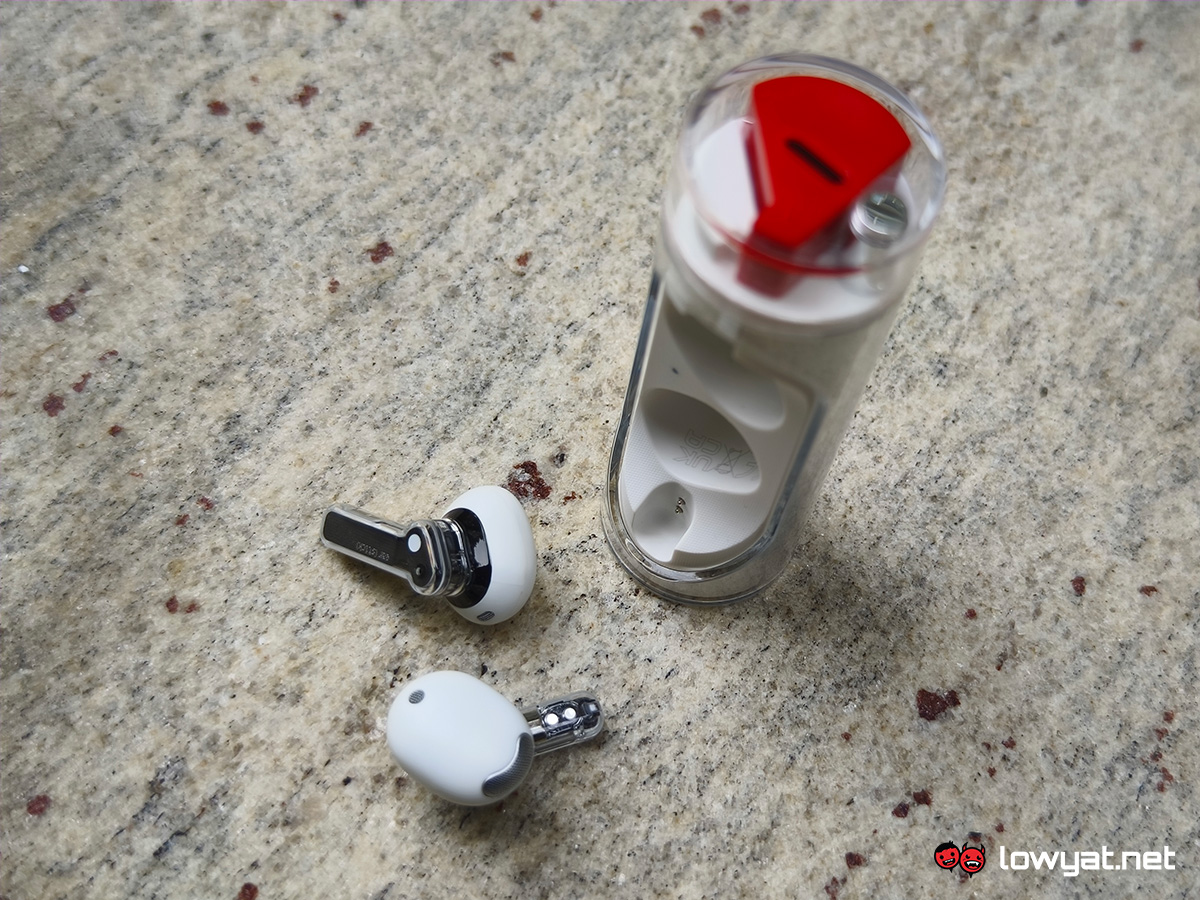
While I find that the audio quality on the Nothing Ear (Stick) has drastically improved over the previous model, the absence of ANC really makes it hard for me to appreciate its full potential. This is especially in louder environments, where external sounds could easily contaminate your listening experience.
To make matters worse, the buds themselves barely have the ability to block out noise due to their design. Rather than using the same form factor as the Ear (1), Nothing went with the regular AirPods approach where the earpieces conform to the shape of the user’s ears instead of relying on eartips. And they’re not form fitting either, hence their inability to suppress external noise.
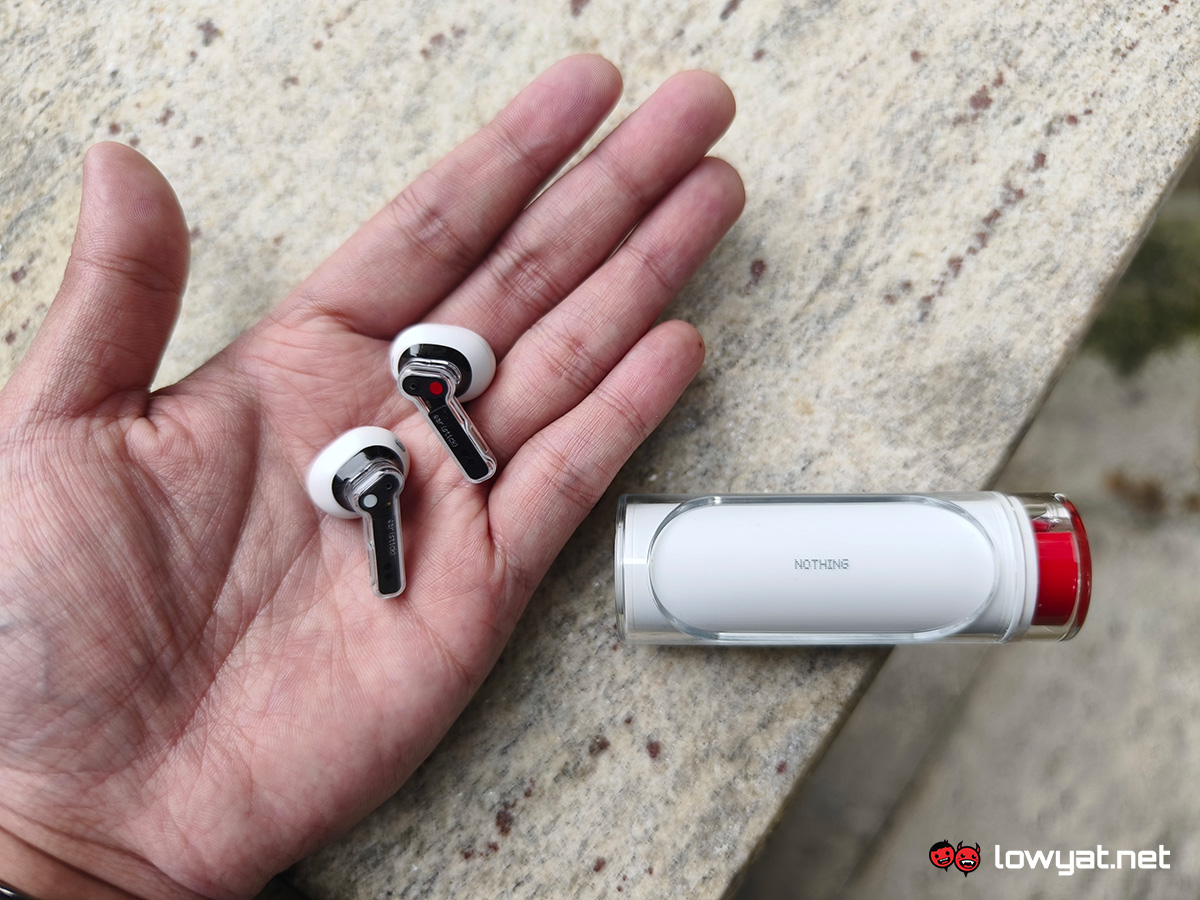
Nothing claims that it has tested the Ear (Stick) on a hundred pairs of ears to ensure its design is comfortable to wear. However, you can count me in the majority that are not included in the list, as I don’t find them comfortable at all.
This is mainly due to the right earbud not being able to sit properly in my ear, which actually causes even more external noise to impede my experience, while at the same time resulting in uneven audio volume delivery. Sure, this is also because my right ear’s shape is not the same as my left’s, but consider this feedback a heads up to those who also face a similar problem as mine.
Should I Buy It?
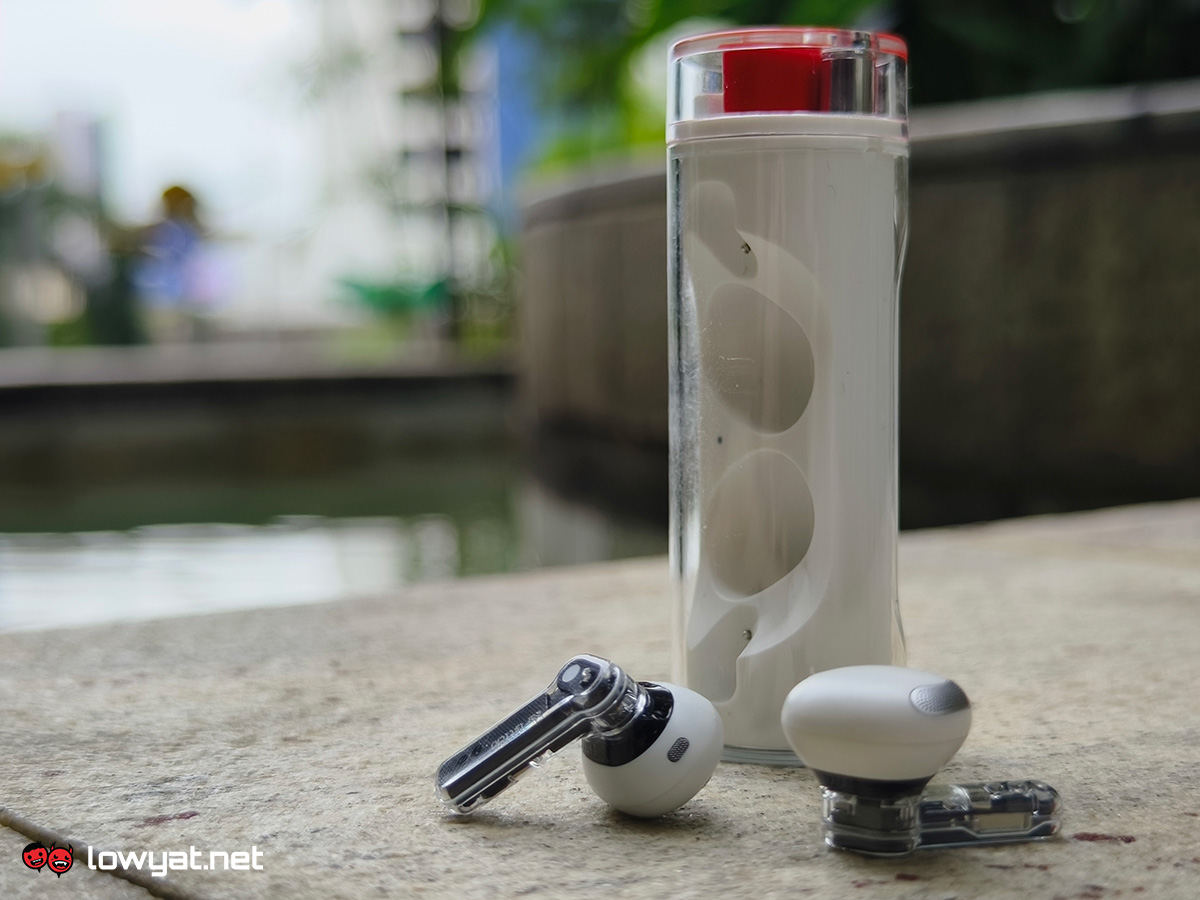
The Nothing Ear (Stick) is clearly an entry-level option. And for that, it’s already obvious that the company has decided to strip down the best features from its inaugural audio product in favour of affordability for existing and new users of its brand.
Affordable? Indeed it is, but is the RM 469 price tag attractive?
As I’ve said before, the Ear (Stick) grants you with up-to-date sound drivers and a cooler charging case, but at the cost of unguaranteed comfort and the exclusion of ANC – an essential function that allows you to fully appreciate the full potential of its audio delivery. But on the other hand, forking out an additional RM 130 for the Ear (1) instead will provide you with the much appreciated quality-of-life feature, though you’ll be left with dated hardware.
Personally, I’d rather spend that extra amount as the price gap isn’t really that wide.
Follow us on Instagram, Facebook, Twitter or Telegram for more updates and breaking news.


